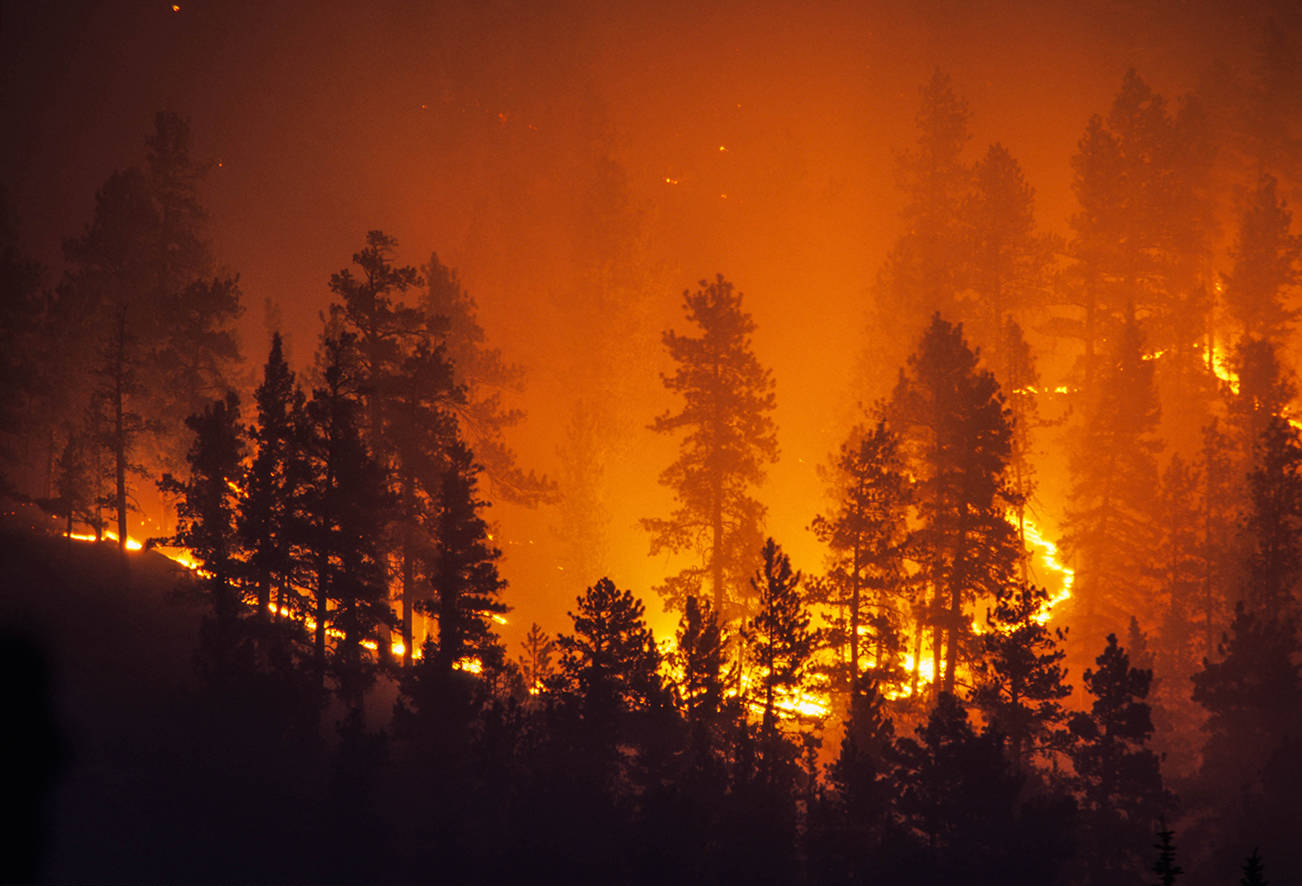Submitted by Kai Hoffman-Krull
San Juan Islands Conservation District
During a pandemic, it can be difficult to prepare for a future disaster. When a crisis exists in our mind rather than our eyes, it is easy for it to fade like smoke on the horizon. But the horizon may be filled with smoke soon this fire season, and fire seasons are predicted to become more severe for San Juan County as we move into a changing climate.
The National Interagency Fire Center predicts Washington and Oregon to have the highest increase in wildfires of anywhere in the country this summer. Washington has already seen nearly triple the number of usual wildfires at this point in our season, a year when it has been difficult to recruit wildland firefighters due to COVID-19. Areas in the Northwest have reported a nearly 25 percent reduction in firefighters, in part due to the difficulty with social distancing in firefighting camps and crews. We could be facing one of our more difficult fire seasons with less capacity to put them out.
Our current fire risk, both in the islands and throughout the Northwest, has been building over the past hundred years due to a history of fire suppression and clear-cutting logging practices, developing a buildup of unburned regrowth. Like a garden left unweeded, this creates a concentration of sickly trees competing for limited light, water and soil nutrients. Unhealthy trees struggle to develop natural fire retardants in their bark, making them more susceptible to igniting. Whereas forests that burn regularly develop well-spaced mature trees that char on their bark rather than igniting, modern fires often result in leaving nothing but charcoal and ash. These fires then release the carbon stored in these trees and soil into the atmosphere, resulting in an annual average of 290 million metric tons of carbon dioxide, 4-6 percent of our nation’s yearly emissions.
As we move further into a changing climate, forests will be under increased stress due to climatic variation. For our San Juan County forests, one of those key stressors is and will be drought. The Washington Department of Natural Resource has integrated research to predict the areas of Western Washington that will experience the most severe drought conditions from now until 2040. The following map illustrates these projections for the next twenty years for our region, with the darker colors indicating increased drought severity:
San Juan County, along with areas in the North Cascades, are likely to experience extended dry periods in the summer. This concentration of rain in the winter will result in trees being placed under greater strain through the summer and fall, making them more susceptible to insect pests, disease, and mortality—tree conditions that make them vulnerable to catching fire. Increasing the flammability of our forests at the same time we experience longer dry spells presents an ever-growing risk of catastrophic fire events.
When we talk about fighting a fire we often think of firefighters, fire trucks, and streams of water putting out the blaze. But what if these massive fires never happened in the first place? When we consider improving the health of our forests as a key strategy for decreasing catastrophic fire we could also imagine our firefighters as our local foresters, arborists, active landowners and sustainable loggers. Instead of losing the forest, we can recognize that these overstocked stands hold valuable resources for our community and island ecology.
The San Juan Islands Conservation District is working with a network of local forestry organizations in the San Juan County Forest Health Collaborative and our local fire districts to conduct an updated County Community Wildfire Protection Plan. This plan will provide a mapping analysis of the forest stands with the greatest need for restoration and tree removal, as well as a series of different research findings on uses for this excess wood. These assessments include examining the role of decomposing and charred wood in our island forest ecosystems in collaboration with Oregon State University, Micro-grid bioenergy and district heating with Wisewood Energy, and the economics of local milling and lumber supply. The Conservation District is taking a holistic approach to examining solutions for our excess biomass because the quantity of material is overwhelming. The last Community Wildfire Protection Plan, written in 2012, estimates that San Juan County has nearly 85,000 acres of forest at the moderate or severe need for fire fuel reduction.
You can help us figure out which strategies for using the excess wood of our forests will be successful. Please take our Community Wildfire Protection Plan survey (https://www.sanjuanislandscd.org/cwpp-forest-landowner-survey) to help us understand our opportunities for investing in our local forest health and fire resilience. We hope to offer updates from the process as they occur through articles like this.
At a time when we are engaged in a web of interrelated struggles, let us continue to look for all opportunities in healing. As the majority of our island forests have not significantly burned in catastrophic ways, there is still time for resources to not become costs. How we invest in the health of our forests now will directly shape their resiliency in a changing climate. Our forests are a defining feature in our land and seascape, let us find new ways to care for them in this new time.




